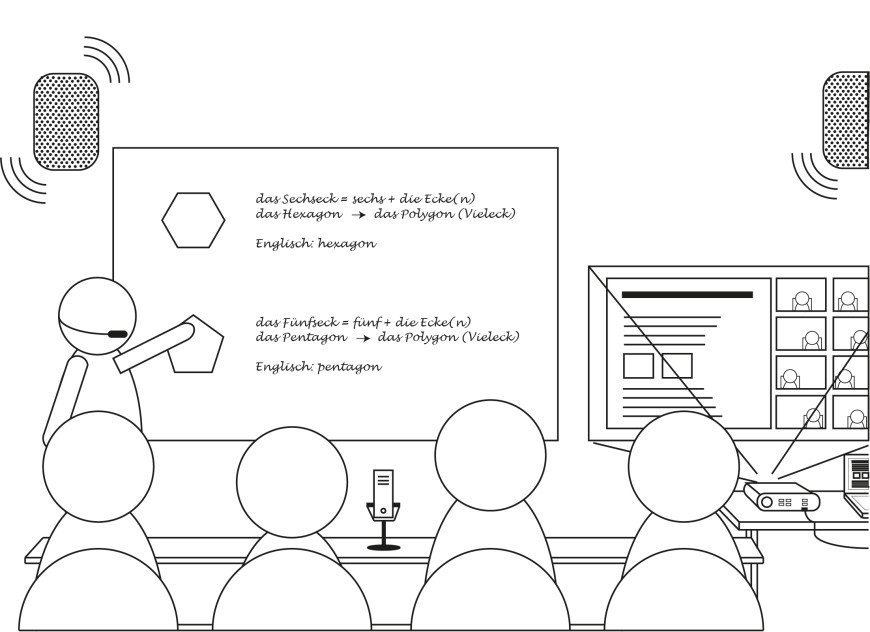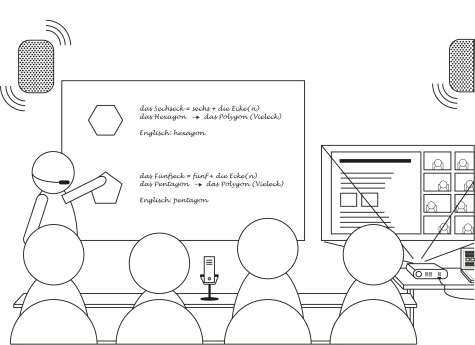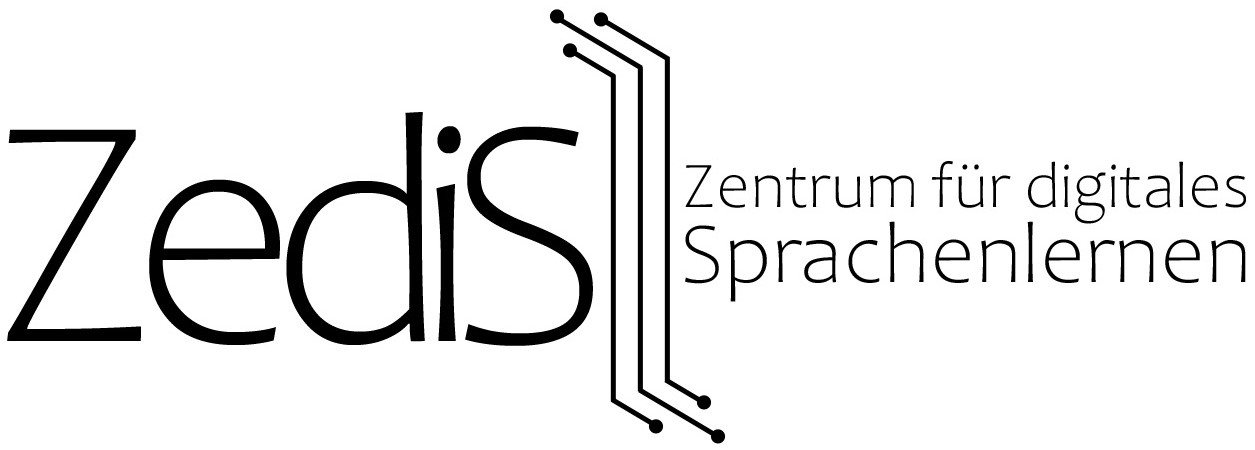Hybrid teaching is synchronous teaching that takes place simultaneously in the form of face-to-face instruction and online via a video conferencing tool (cf. Möslein-Tröppner & Bernhard 2021:128). This type of teaching has many advantages, but also poses some disadvantages. Students who could not attend class due to illness or a study-related excursion, etc. have the opportunity to be attend instruction regardless of their physical location. One disadvantage of hybrid teaching is that instructors must set up additional hardware in advance to provide equivalent instruction to students who are on-site and students who are participating online. In addition to the extra work for instructors, classes can be stressful for online participants if background noise or discussions are transmitted over the microphone in poor quality, which could impair listening comprehension.
| Advantages | Disadvantages |
|---|---|
| Learners who are unable to attend face-to-face classes due to travel, illness/quarantine, etc., are given the opportunity to participate | Extensive setup of necessary equipment |
| Offers students more flexibility – they can participate from the Lichtwiese campus, for example, without having to travel to the city center to do so | The management of multiple groups (analog and digital) can be difficult depending on the tasks |
| Good hardware is needed to enable smooth transmission (without noise) |


Literature:
Möslein-Tröppner, Bodo; Bernhard, Willi (2021): Digital Learning. Was es ist und wie es praktisch gestaltet werden kann. Wiesbaden: Springer Gabler.

